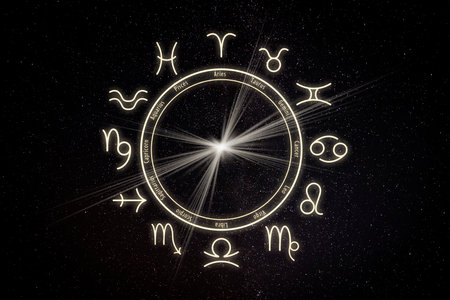Introduction to Mahadasha and Health in Indian Astrology
In the vast tapestry of Indian culture, astrology holds a sacred place, guiding individuals through the ebbs and flows of life. One of the most profound concepts in Vedic Jyotish is Mahadasha—a unique system that divides a person’s life into planetary periods, each ruled by a specific planet. In the Indian context, these Mahadashas are believed to not only influence one’s destiny but also play a pivotal role in determining health and wellbeing. According to traditional beliefs, every planet carries its own energy and karmic signature, which can manifest as certain physical or mental health challenges during its period. Understanding the foundational principles of Mahadasha provides valuable insight into how ancient wisdom interprets the cosmic influences on our bodies and minds. This knowledge is deeply rooted in India’s spiritual heritage, where astrology is often intertwined with ayurveda, yoga, and holistic healing practices. By delving into the effects of various Mahadashas on health, we honour both the cultural legacy and the spiritual quest for balance that defines Indian society.
2. Planetary Mahadasha and their General Influences on Health
In the vast landscape of Indian Jyotish Shastra, each planet’s Mahadasha is believed to carry unique vibrations that influence physical, mental, and spiritual health. The ancient sages observed these effects over centuries, integrating them with Ayurveda and traditional healing practices. Let us explore how the nine planetary Mahadashas—Surya (Sun), Chandra (Moon), Mangal (Mars), Budh (Mercury), Guru (Jupiter), Shukra (Venus), Shani (Saturn), Rahu, and Ketu—are associated with specific health issues according to Indian medical astrology.
| Planetary Mahadasha | General Health Influences |
|---|---|
| Surya (Sun) | Can impact heart health, vision, bones, vitality. Imbalances may cause fevers, eye troubles, or cardiac concerns. |
| Chandra (Moon) | Affects mind, emotional balance, fluids in body. Issues may manifest as insomnia, anxiety, coughs or menstrual disorders. |
| Mangal (Mars) | Governs blood, muscles, aggression. Prone to injuries, inflammations, hypertension or accidents during this period. |
| Budh (Mercury) | Rules nerves, skin, respiratory system. Skin allergies, nervous disorders, or speech impediments may arise. |
| Guru (Jupiter) | Linked with liver, fat metabolism and growth. Diabetes, obesity or liver complaints are possible if afflicted. |
| Shukra (Venus) | Influences reproductive system, kidneys and hormonal balance. Can bring fertility issues or urinary tract problems. |
| Shani (Saturn) | Associated with bones, joints, chronic diseases. Arthritis, paralysis or slow-healing ailments may be prominent. |
| Rahu | Tends towards mysterious illnesses and psychological disturbances; allergies or addictions are common challenges. |
| Ketu | Represents detachment; may trigger sudden illnesses or spiritual crises affecting mental peace and immunity. |
Understanding the Root Cause Through Mahadasha Analysis
The interplay between Mahadashas and bodily systems is deeply woven into Indian culture—from home remedies to temple rituals seeking planetary grace for healing. By identifying which planet’s Dasha is active in a native’s life chart (Janma Kundali), Vaidyas and astrologers can suggest practical measures: mantra chanting for Surya dosha, fasting for Shani afflictions, or ayurvedic herbs suited to Chandra imbalances. Each planetary period thus marks not only a phase of karma but also offers a spiritual opportunity for holistic well-being through conscious living guided by age-old wisdom.

3. Common Health Challenges under Specific Mahadashas
In the sacred tradition of Indian medical astrology, each Mahadasha—ruled by a particular planet—casts a distinct influence on our physical and mental health. The interplay between planetary energies and the tridoshas (Vata, Pitta, Kapha) forms the foundation for understanding disease manifestation in Ayurveda. Let us explore how different Mahadashas are associated with certain health issues familiar to Indian households, along with time-tested remedies.
Sun (Surya) Mahadasha
The Sun signifies vitality and the heart. During Surya Mahadasha, one may experience heart-related concerns such as high blood pressure (rakta chaap), heat strokes, and eye problems. Excess Pitta is often aggravated, leading to acidity and headaches. Remedies include Surya Namaskar, cooling foods like cucumber and buttermilk, and prayers at sunrise.
Moon (Chandra) Mahadasha
Chandra governs the mind and fluids in the body. Mental stress, insomnia (anidra), hormonal imbalances, and respiratory issues like cold and cough are common. An imbalance in Kapha dosha may manifest. Ayurveda recommends milk with turmeric at night, chanting mantras for calmness, and spending time near water bodies for healing.
Mars (Mangal) Mahadasha
Mangal’s fiery nature can inflame Pitta dosha. Issues such as fevers, blood disorders (rakta vikaar), skin rashes, injuries, or accidents are more likely. Spicy food should be avoided; instead, one should consume aloe vera juice and use sandalwood paste for cooling effects.
Mercury (Budh) Mahadasha
Budh influences nerves and skin. Nervous weakness, speech disorders, allergies, or skin eruptions like eczema may appear. To pacify Vata and Pitta doshas, Brahmi herb tea and green leafy vegetables are helpful. Practicing Pranayama improves nerve strength.
Jupiter (Guru) Mahadasha
Guru brings expansion but can also cause weight gain, diabetes (madhumeha), liver issues, or fat accumulation if imbalanced. Incorporate bitter herbs like neem or karela in your diet, observe moderate fasting (upvaas), and recite Guru stotra for blessings.
Venus (Shukra) Mahadasha
Shukra affects reproductive organs and beauty. Fertility issues, urinary tract infections (mutra rog), kidney stones, or skin ailments are common during this dasha. Ayurvedic support includes shatavari churna for women’s health and gulkand for cooling the system.
Saturn (Shani) Mahadasha
Shani is slow-moving and impacts bones and chronic diseases like arthritis (sandhi vata), joint pain, depression, or paralysis. Sesame oil massage (abhyanga), black til consumption on Saturdays, and Hanuman Chalisa recitation offer relief.
Rahu & Ketu Mahadasha
These shadow planets bring mysterious or sudden illnesses—mental unrest, phobias, chronic allergies, or digestive disturbances are typical. Seek balance through meditation, regular detoxification with triphala powder, and maintaining spiritual discipline through japa or yajna ceremonies.
This ancient wisdom reminds us that planetary periods not only shape our destiny but also our well-being. By harmonizing astrological insights with Ayurveda’s holistic remedies—be it tulsi chai for immunity or sacred rituals at home—we honor both tradition and health in every phase of life.
4. Role of Nakshatras and Bhavas in Health Prediction
In the grand tapestry of Indian medical astrology, understanding health issues during Mahadasha goes beyond planetary periods alone. The deeper layers are woven by Nakshatras (constellations) and Bhavas (houses), which play a crucial role in refining health predictions. According to the revered Jyotish Shastras, both these elements serve as the guiding lights that illuminate how specific Mahadashas may manifest in an individual’s physical well-being.
Nakshatras: The Cosmic Pulse
Nakshatras, or lunar constellations, represent subtle cosmic energies that channel the effects of their ruling planets. Each Nakshatra is associated with particular body parts and health tendencies. During a Mahadasha, if the ruling planet is posited in a challenging Nakshatra, the native may experience issues linked to that constellation’s domain. For example, Ashlesha Nakshatra is traditionally linked with ailments connected to toxins or digestive disturbances, while Rohini can indicate problems related to fertility or reproductive organs.
Bhavas: The House Influence
Bhavas, or astrological houses, further detail the nature and location of potential health problems. As per Jyotish classics, each house rules over specific anatomical zones and functions:
| Bhava (House) | Body Part / Health Focus |
|---|---|
| 1st House (Lagna) | Overall vitality, head, general constitution |
| 6th House | Disease-prone areas, chronic illnesses |
| 8th House | Surgery, longevity issues, hidden disorders |
| 12th House | Hospitalization, sleep disturbances, isolation-related conditions |
Synergistic Effects during Mahadasha
The true insight emerges when we analyze how Mahadasha lord’s placement in a particular Bhava and Nakshatra combines their influences. For instance, if Rahu Mahadasha operates while Rahu sits in Bharani Nakshatra (linked to reproductive organs) within the 8th house (associated with chronic diseases), classical Jyotish would suggest heightened risk for gynecological or sexual health issues.
Common Interpretations from Indian Jyotish Shastras
- Mars in Kritika Nakshatra in 6th Bhava: Prone to fevers, burns, or inflammatory diseases.
- Moon in Shravana Nakshatra in 12th Bhava: Susceptibility to emotional stress-induced insomnia or anxiety-related conditions.
- Venus in Purva Phalguni in Lagna: Issues with skin or hormonal imbalances during Venus Mahadasha.
This intricate interplay between Mahadasha lords, Nakshatras, and Bhavas forms the heart of predictive medical astrology in India. By interpreting these sacred connections through ancient wisdom and contemporary application, one can better anticipate and manage health challenges aligned with the rhythms of their cosmic journey.
5. Mitigation Remedies as per Indian Traditions
In the realm of Indian medical astrology, the ancient rishis have prescribed powerful upayas (remedies) to mitigate the negative effects of Mahadashas that may impact one’s health. These remedies are deeply rooted in the cultural and spiritual ethos of India, blending Vedic wisdom with daily practices that harmonize body, mind, and spirit.
Mantra Chanting: The Vibrational Healing
One of the most revered remedies is mantra chanting. Each planet (graha) has its own beej mantra, such as “Om Namah Shivaya” for calming adverse effects of Saturn or “Om Durgaye Namaha” for Mars-related issues. Chanting these mantras daily—especially during Brahma Muhurat—creates positive vibrations that align your energies with cosmic frequencies, easing ailments caused by specific Mahadashas.
Daan (Donations): The Karma Balancing Act
The act of giving, or daan, is a time-honoured Indian tradition to appease planetary afflictions. For example, donating black sesame seeds and urad dal on Saturdays can pacify Shani Mahadasha; offering white clothes or rice on Mondays helps during adverse Moon periods. These acts not only please the planets but also foster humility and compassion in the devotee.
Fasting (Vrat): Cleansing Body and Soul
Fasting is another remedy embraced across India’s diverse communities. Observing a vrat on specific days—for instance, Ekadashi for Jupiter-related troubles or Tuesday fasts for Mars—purifies both body and consciousness. It is believed that fasting helps reduce karmic baggage and strengthens mental resilience against Mahadasha-induced health problems.
Pujas and Rituals: Invoking Divine Grace
Performing pujas, such as Navagraha Shanti Puja or specific homams (fire rituals), invokes blessings from the deities governing each planet. These ceremonies are often conducted in temples or at home under the guidance of learned pandits. Their collective prayers and rituals channel divine energy to counteract malefic planetary influences on health.
Cultural Significance of Upayas
These remedial measures are not mere superstitions but integral aspects of Bharatiya samskriti (Indian culture). They reflect an age-old belief in interconnectedness—between cosmic forces and human life—and emphasize self-effort alongside divine grace. By embracing these upayas with shraddha (faith) and regularity, individuals strive for holistic well-being during challenging Mahadashas.
6. Case Studies from Indian Context
Mahadasha’s influence on health is not just a theoretical idea—it is woven into the lived experiences of countless Indian families. Let us explore some relatable real-life and scriptural examples that reflect how Mahadasha shapes health outcomes, echoing stories often discussed in Indian homes and community gatherings.
Example 1: Saturn Mahadasha and Chronic Health Challenges
In many traditional households, elders recount stories of family members experiencing persistent joint pains, respiratory issues, or lethargy during Shani (Saturn) Mahadasha. For instance, Mrs. Shobha from Varanasi shared how her father’s arthritis flared up during his Saturn period, leading to multiple visits to Ayurvedic practitioners and astrologers who confirmed the connection in his Janma Kundali.
Scriptural Reference: King Harsha’s Ordeal
The Brihat Parashara Hora Shastra narrates incidents where individuals faced severe hardships—including health setbacks—during unfavourable Dashas. King Harsha’s tale highlights how even royalty was not immune to the karmic influences of planetary periods.
Example 2: Rahu Mahadasha’s Psychological Impact
It is common in urban Indian communities for individuals going through Rahu Mahadasha to report episodes of anxiety, mental confusion, or addiction. Take the case of Amit from Mumbai—a successful IT professional—who experienced unexplained stress and insomnia. After consulting a family astrologer, it was discovered that he had entered Rahu Mahadasha, which explained his struggles with mental peace and emotional balance.
Family Wisdom Passed Down Generations
Grandmothers often advise their grandchildren about maintaining spiritual practices during challenging Dashas, especially Rahu or Ketu periods, as these are believed to disturb mental equilibrium. Such guidance forms a core part of holistic health management in Indian families.
Example 3: Jupiter Mahadasha and Recovery
Conversely, many Indians associate Guru (Jupiter) Mahadasha with periods of recovery and improved vitality. A well-known case is that of Smt. Latha from Chennai, who overcame a long-standing digestive disorder after entering Jupiter’s period. Her family attributes this positive change to both her medical regimen and the auspicious influence of Guru Dasha, as advised by their trusted astrologer.
Community Gatherings: Sharing and Learning
During satsangs and community events, people frequently share anecdotes about how different Dashas have impacted their health or that of loved ones. These exchanges reinforce the cultural belief that planetary periods are integral to one’s physical and mental well-being, guiding proactive health measures rooted in tradition.
Together, these stories underline the deep connection between astrology and healthcare in India—where Mahadasha analysis remains an invaluable tool for understanding and navigating life’s health challenges within every family and community.
7. Final Thoughts: Integrating Vedic Wisdom for Holistic Wellness
India’s ancient heritage in astrology and Ayurveda offers profound insights into understanding the intricate connections between planetary periods (Mahadashas) and health. By recognising which Mahadasha may activate certain vulnerabilities or imbalances, we empower ourselves to take timely preventive measures—be it dietary changes, yogic practices, or Ayurvedic remedies. However, as our society advances, it is vital to harmonise these age-old traditions with modern medicine. Consulting a trusted Vedic astrologer can reveal the underlying astrological influences on one’s physical and mental well-being, while seeking guidance from Ayurvedic doctors helps in restoring balance through nature’s wisdom. At the same time, embracing scientific healthcare ensures evidence-based interventions and accurate diagnostics. In Indian culture, healing is not merely the absence of disease but a journey towards physical vitality, emotional peace, and spiritual alignment. Let us remain rooted in our rich cultural wisdom and spiritual practices while being open to integrative approaches that serve our highest good. True wellness emerges from this holistic synergy—honouring our traditional roots even as we embrace the best of what the modern world has to offer.


